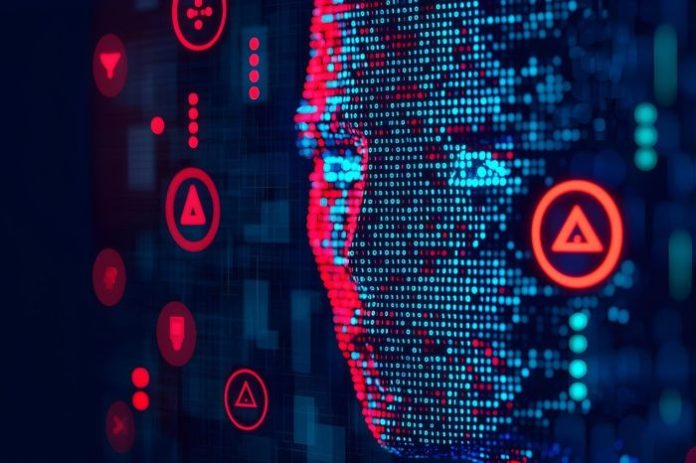Cyberattacks are becoming more advanced every day. Hackers now bypass traditional defenses effortlessly, leaving businesses struggling to safeguard their data and systems. Implementing robust cyber threat detection is essential to identify and respond to potential risks before they cause damage. It’s frustrating, expensive, and sometimes disastrous.
Here’s the positive news: AI is transforming how we defend ourselves. Through machine learning, AI can identify threats faster than any human team could. For instance, it can analyze millions of signals within seconds to detect unusual activity before harm is done.
This blog will discuss how AI supports businesses in staying ahead of cybercriminals. You’ll discover real-time threat detection, zero-day attacks, predictive analytics, and other tools redefining cybersecurity. Seeking stronger protection? Keep reading!
Table of contents
Real-Time Cyber Threat Detection with AI
AI identifies threats in real time by continuously monitoring network activity. It scans millions of data points to detect unusual behavior before damage occurs. Suspicious patterns, like sudden spikes in traffic or unauthorized access, trigger alerts for immediate action.
Machine learning enhances this process over time. Algorithms learn from past incidents to foresee future risks. Cybersecurity partners such as KPI use these capabilities to deliver real-time network monitoring, proactive threat alerts, and adaptive protection for businesses that can’t afford downtime. Faster detection means less downtime, minimized financial losses, and improved data protection.
This provides businesses with assurance in maintaining an advantage over cyber threats.
Predictive Analytics in Cybersecurity
Hackers don’t wait for an invitation to strike. Predictive analytics assists businesses in staying ahead by forecasting potential cyber threats before they cause damage. Using artificial intelligence and machine learning, it analyzes patterns in network traffic, user behavior, and historical data to spot warning signs early.
If a login attempt comes from an unusual location or at odd hours, predictive tools flag it instantly. This forward-thinking approach doesn’t just protect the business; it also decreases downtime caused by breaches. Many organizations partner with Proximit’s tech management teams to implement predictive analytics within their cybersecurity frameworks—helping them detect anomalies faster and reduce manual oversight through intelligent automation. “You can’t fight tomorrow’s threats with outdated tools.”
Predictive systems can identify vulnerabilities that are likely targets for attacks based on current trends. For example, if ransomware is exploiting specific file-sharing software globally, these systems alert administrators about similar risks in their setup.
The ability to forecast outcomes isn’t guesswork but relies on precise numbers processed continuously. Combined with detailed risk assessment reports, this technology strengthens defenses while saving time for IT teams overwhelmed with manual monitoring tasks.
AI-Powered Threat Intelligence
AI connects information more quickly than a detective, identifying threats concealed within vast data streams.
Correlating data from multiple sources
AI plays a crucial role in connecting dots across vast datasets. It helps businesses identify cyber threats faster and more accurately by analyzing information from multiple platforms.
- AI gathers data from network logs, user activities, and endpoints to detect irregularities.
- It compares historical attack records with real-time events to discover patterns of malicious behavior.
- Threat intelligence platforms interact with AI systems to consolidate cybersecurity insights into one view.
- Machine learning models analyze diverse sources like emails, websites, and servers to predict risks.
- Tools designed for the intrusion detection process billions of data points daily without human intervention.
- Real-world examples include using AI to link phishing email origins with known malware databases.
- Businesses can evaluate security gaps across systems through cross-referenced datasets generated by AI analysis.
Identifying emerging attack patterns
By linking information across networks, AI identifies trends hackers use. Machine learning examines how threats change over time to expose new vulnerabilities. For instance, it identifies unusual login attempts, phishing emails, or malware deployment patterns before they spread.
Cyber threat detection tools also forecast tactics bad actors may try next. They outline behaviors like botnet attacks and ransomware techniques to anticipate risks businesses might encounter.
These systems function almost like digital investigators, giving IT teams an opportunity to respond early to potential breaches.
Detecting Zero-Day Attacks with AI
AI identifies atypical behavior quickly, aiding you in detecting concealed threats before they occur.
Behavioral baselines and anomaly detection
Computers study typical patterns in user behavior to detect threats. They examine actions such as login times, file access, or network usage. If unexpected activity takes place, like a sudden increase in data transfers at midnight, alarms activate immediately.
Machine learning monitors these anomalies more rapidly than humans. For instance, AI detects minor variations that indicate insider breaches or malware infections. By examining past behaviors and signaling irregularities instantly, businesses act before damage extends across systems.
Proactive Defense Strategies
Staying ahead of cyber threats requires sharp tactics and constant vigilance. AI provides businesses with the resources to anticipate attacks before they occur.
Anticipating and neutralizing threats
Predicting and stopping cyber threats is no small feat. Businesses need strong strategies to stay ahead of attackers.
- Study past attack patterns. Machine learning tools analyze historical data to identify patterns hackers may replicate in future attempts.
- Monitor digital systems around the clock. AI ensures threats are detected instantly, reducing response times significantly.
- Apply predictive analytics to anticipate risks. Systems can assess vulnerabilities and recommend solutions before they escalate into problems.
- Establish clear security protocols for employees. Teach staff how to recognize phishing attempts or other suspicious behavior online.
- Set up automated responses for common attacks, like malware or denial-of-service (DDoS) incidents, to stop them early.
- Invest in a threat intelligence platform that combines data from multiple sources for improved situational awareness.
- Regularly update cybersecurity measures. Hackers adapt quickly, so outdated defenses leave your systems exposed.
- Conduct regular penetration tests on networks and applications to identify weak spots before attackers exploit them.
- Collaborate with reliable managed IT services for expert guidance on protecting sensitive business data effectively.
Balancing the Risks and Benefits of AI in Cybersecurity
AI enhances cybersecurity defenses but isn’t without its challenges. Over-relying on AI systems can lead to blind spots, especially when algorithms fail to identify highly sophisticated threats.
Machine learning models may also be susceptible to manipulation, such as data poisoning attacks that feed false information into the system, distorting detection results.
While AI advances threat detection and response speed, it requires constant monitoring. Human oversight remains crucial for validating alerts and addressing ethical concerns like privacy violations during data analysis.
Striking a balance means combining AI functionality with skilled professionals who understand both technology limitations and evolving cyber threats.
The Future of AI in Cyber Threat Detection
AI continues to progress, offering faster and smarter methods for cyber threat detection. Machine learning models are expected to predict attacks with greater accuracy by analyzing vast amounts of data in real time.
These systems will help businesses stay one step ahead of hackers and prevent breaches before they occur.
Automated responses will likely become more precise, addressing vulnerabilities instantly without manual intervention. The expansion of AI-powered tools will also explore new possibilities in detecting zero-day threats through advanced pattern recognition.
Businesses relying on such technology can expect stronger digital security and fewer disruptions from evolving cyber risks.
Conclusion
AI is changing how we combat cyber threats. It identifies attacks more quickly and recognizes dangers that humans might overlook. By analyzing patterns, it anticipates risks before they occur.
Businesses build stronger cyber threat detection without increasing the workload for their teams. The future of cybersecurity appears more advanced and precise with AI at the forefront.











